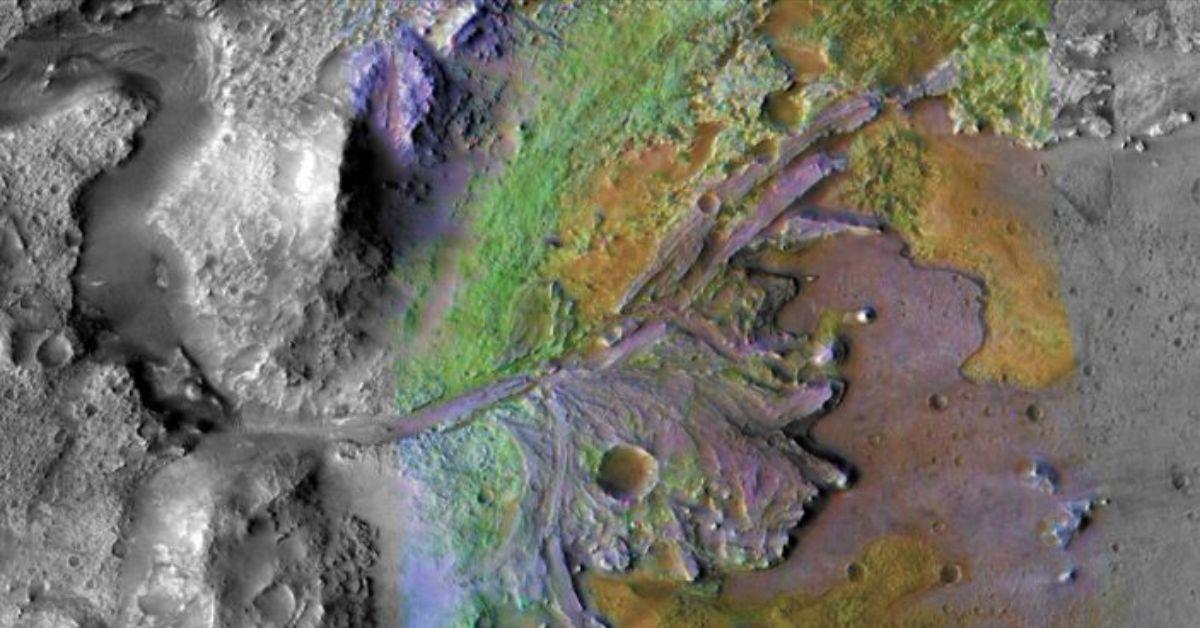Otherworldly Wonders: Mars Rover Explores Ancient Lakes and Rivers, Finds Signs of Martian Life

A view of Mars from NASA's Perseverance rover.
Dec. 31 2023, Published 9:02 a.m. ET
Celebrating 1,000 days on Mars, NASA recently announced the completion of its exploration of a historic river and lake system within the Jezero Crater, shedding light on Mars' geological past.
Utilizing the six-wheeled Perseverance rover, NASA successfully gathered 23 samples during this journey, contributing significantly to the scientific understanding of that region on Mars.
Among the notable findings, which were first presented at the American Geophysical Union fall meeting in San Francisco, "Lefroy Bay" emerged as a crucial discovery. This particular sample exhibited an abundance of fine-grained silica, a substance renowned for preserving ancient fossils on Earth.
Another noteworthy find, named "Otis Peak," contained a substantial amount of phosphate, commonly linked to signs of life. Both samples were found to be rich in carbonate, a material known for preserving the environmental conditions prevalent during the rock's formation, according to NASA.

Mars’ Jezero Crater is overlaid with mineral data detected from orbit.
Explaining the rationale behind choosing Jezero Crater as the landing site, Perseverance's project scientist, Ken Farley of Caltech, emphasized the significance of orbital imagery revealing a delta — a clear indication of a past large lake within the crater.
Farley said “delta rocks are a great environment for entombing signs of ancient life as fossils in the geologic record,” according to NASA.
NASA's exploration revealed that Jezero Crater originated from an asteroid impact around 4 billion years ago.
Since the rover's landing in February 2021, scientists have identified the crater floor composition, featuring igneous rock formed from magma associated with Martian volcanic activity.
The discovery of sandstone and mudstone indicated the presence of the first river hundreds of millions of years later, while salt-rich mudstones pointed to a shallow lake that expanded to a diameter of approximately 22 miles and a depth of 100 feet.
Furthermore, the mission unveiled evidence of fast-flowing water transporting boulders from outside Jezero onto the delta and other areas within the crater.
Libby Ives, a postdoctoral fellow at NASA’s Jet Propulsion Laboratory in Southern California, emphasized the necessity of close-up exploration with Perseverance to comprehend the detailed timeline of Jezero's geological history.
Never miss a story — sign up for the Front Page Detectives newsletter. Be on the scene the moment news breaks.
In addition to this groundbreaking exploration, NASA's Curiosity Rover, in a separate initiative, uncovered remnants of ancient, eroded rivers within several craters on Mars, as Front Page Detectives previously reported.
Utilizing a combination of Curiosity rover images, sedimentary rock scans from beneath the Gulf of Mexico, and computer simulations, researchers, including lead author Benjamin Cardenas from Pennsylvania State University, concluded that common crater formations, known as "bench-and-nose" landforms, likely represent remnants of ancient riverbeds.
Cardenas highlighted, "We’re finding evidence that Mars was likely a planet of rivers. We see signs of this all over the planet," reinforcing the growing understanding of Mars' watery past.
Become a Front Page Detective
Sign up to receive breaking
Front Page Detectives
news and exclusive investigations.
